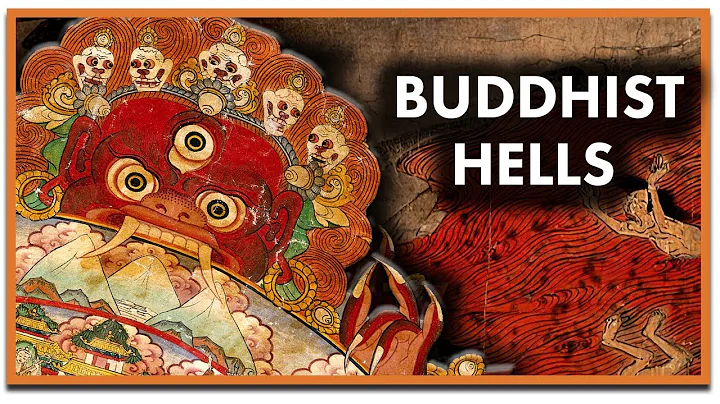Sakyamuni's father is the king of Kapirava , whose name is Tutuna, which is Sudon King in Buddhist scriptures. My mother's name is Mahamaya, and she is the eldest daughter of King Shanjue, the Tianbing City, opposite the Acropolis of Kapila.
Sakyamuni was born on Madame Maya on the way back to her mother's home for childbirth, Lumbini Garden is her birthplace.
The days when Sakyamuni was born, the scriptures have different statements. After a rough count, there are as many as 60 types. Chinese scholars believe that Sakyamuni was born in 565 BC and died in 486 BC. He died seven years earlier than Confucius . This theory is also accepted by Japan, India and other countries.
Modern excavations of Lumbini site have been carried out. In the center of the site is the Madame Maya Temple, which contains reliefs of Madame Maya’s birthday. According to Buddhist legend, when Mrs. Maya passed through the Lumbini Garden, she saw a big tree in the garden with gorgeous flowers and lush branches and leaves. She raised her right hand and wanted to pick a branch. Unexpectedly, at this moment, Sakyamuni was exposed from Mrs. Maya's right flank. The relief picture shows Madame Maya put her left arm on the maid's shoulder, raised her right arm and climbing the branch with her hand. Sakyamuni was exposed on her right flank, and the maid held her in a golden robe.

Madame Maya died on the seventh day of Sakyamuni's birth. Sakyamuni was raised by his aunt, Pajapati. Later, Sakyamuni's aunt also converted to Buddhism and became the first nun in Buddhism.
Sakyamuni learned all the knowledge and skills that should be possessed for raising the royal family since he was a child. At the age of sixteen, he married his cousin, Yeshudra, as a concubine. The two had a good relationship. A poem in "Praise of the Buddha" praises it, " Virtuous Concubine , beautiful and beautiful, as beautiful as the queen, and they were together day and night," Shortly after their marriage, they gave birth to their son Rahula.
Shakyamuni's life is luxurious and comfortable. Volume 29 of "Hamsuan Jing in " records his memories that he has three palaces suitable for living in different seasons, including those who keep warm in winter, those who take refuge in summer, and those who keep moisture in rainy season. The clothes he wore were very luxurious and the food he ate was very delicate. When he was fine, he could watch singing and dancing, and he lived a very comfortable life.
As for the future path, his father also arranged for him, that is, to be the king of Kapilava .
From a worldly perspective, Sakyamuni can be regarded as the winner in life. There is something that many people can't touch on their entire lives, and Shakyamuni has it as soon as they are born. He lacks nothing in money, power, and beauty. However, when he was 29 years old, Sakyamuni made a decision that shocked the world - he wanted to abandon the world and become a monk and practice.
The reasons are social and individual. The era in which Sakyamuni lived was an era in which the countries of ancient India fought against and annexed each other, and the conflicts between class and ethnic groups were very sharp. Although Sakyamuni was the crown prince of a country, the strength of Kapilava was not very strong. He was often threatened by the power of neighboring countries and was in danger of danger. Sakyamuni thought to himself that even if he succeeded to the throne, he would be unable to change the dilemma of a weak country and a poor people. From this, he realized that all phenomena in the world are impermanent, constantly in the flow and change, and finally return to elimination. Since the ending is destined and the future is destined to be miserable, it is better to leave it and be free.
In addition, Sakyamuni witnessed the scenes of old age, illness, death and other death that followed after one's own life. Reminding one's own destiny, it creates troubles that cannot escape suffering in life. However, the thoughts and actions of Brahmanism at that time could not allow him to gain spiritual liberation. In the end, he gave up the throne and became a monk to practice.

After Shakyamuni became a monk, he first went to the ascetic forest in Bajiaxian Mountain. This is the "holy land" for practitioners. However, as soon as he got there, Sakyamuni was stunned. He saw that many practitioners torture their bodies with various ascetic practices in order to achieve spiritual liberation. Sakyamuni disagreed with this approach, and stayed for a night and left.
At this moment, the person sent by Sakyamuni's father arrived. From these people, Sakyamuni learned his father's decision to become a monk and was very sad. These people came to persuade Sakyamuni to go home.However, at this time, Sakyamuni was very firm in his will, and any mundane things in the world were like smoke and clouds in his eyes. In his eyes, whether it is father-son family affection or husband-wife relationship, they are the most ordinary things in human life, and there is nothing to nostalgic to be attached to.
Hearing the report from his subordinates, Sakyamuni's father was heartbroken, but the road was already done, and he had no choice but to select five people from his relatives, including Aruo Chenru , Ashish, Bati, Shili Kashyapa, Mahana Kuli, etc. to accompany him.
Sakyamuni's next stop is The capital of Magadha , Rhyshe City, , and King Pinba Sara met him. Then, he visited Alalu Karama and Yuluga Ramazi, the number theory believers who lived in the mountains and forests near Rashe City, to practice meditation. However, their teachings are still not the true way to liberation in life in Sakyamuni's eyes.
Later, Sakyamuni came to the Ascetic Forest of Mount Gajah again, sat meditated by the Nilianchan River, and practiced asceticism. After six years, the expected results are still not achieved. He decided to abandon hunger strikes and asceticism. I came to Bodhi Gaya under a Biboluo tree, sat down in a lotus position, pondered and stroking, and finally realized enlightenment and realized at the age of 35.







![[English] Who Am I - Lecture 1 - Ven. Guan Cheng - DayDayNews](https://i.ytimg.com/vi/KU0fUs2It5o/hq720.jpg?sqp=-oaymwEcCNAFEJQDSFXyq4qpAw4IARUAAIhCGAFwAcABBg==&rs=AOn4CLDFpQUN_QwRfC7bmP4sUadq-RcYdg)
![A Moving Masterpiece 清明上河图 [English narration] - DayDayNews](https://i.ytimg.com/vi/kxff-4GktOI/hqdefault.jpg?sqp=-oaymwEcCOADEI4CSFXyq4qpAw4IARUAAIhCGAFwAcABBg==&rs=AOn4CLBtHGLeUpJNCYDJYnZTuISQ1N5Vag)


